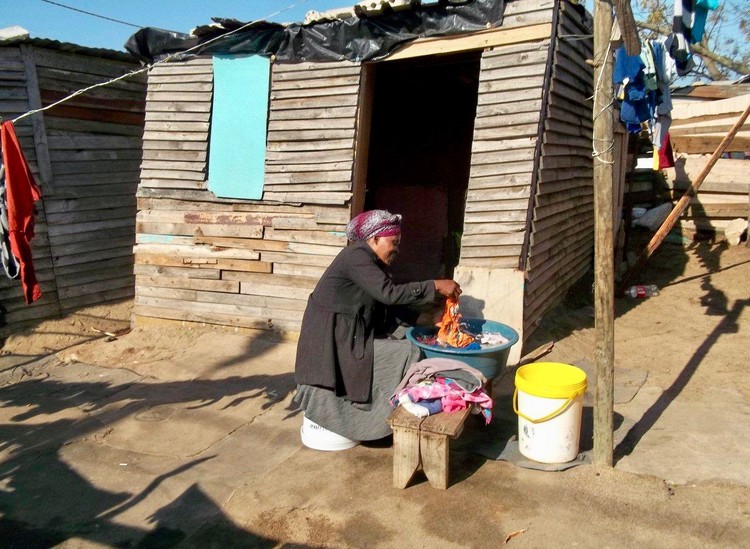Where a house for one means homelessness for another
Many people have lost their backyard shacks after RDP houses built in Wallacedene
According to a ward councillor in Kraaifontein, Simphiwe Nonkeyizana, “more than one thousand former renters are living illegally on empty spaces in various parts of Wallacedene”. (GroundUp can’t confirm his estimate.)
This comes after backyard renters found themselves without homes when their landlords received RDP houses from the Western Cape Department of Human Settlements. The new houses left no space to accommodate backyard shacks.
Nonkeyizana said, “I asked the City to see if it could find an alternative space to accommodate them and give them toilets, water taps and blue bags to keep rubbish.”
He said he also approached the province. He said officials at the housing department told him that “once the residents get placed somewhere, they will never want to leave the place again”.
GroundUp spoke to a number of former backyarders.
Noxolo Sam said she moved out of her landlord’s yard in June after the department dismantled her shack when building the RDP house for her landlord. “The house is completed now, but I can’t go back, because it has taken up all the space in his yard,” she said.
Sam moved to a small shack on Barker Street in Phase 9 where she lives with her 14-year-old son. “I can’t fit all my belongings into the shack, so I keep some at my friend’s place,” she said.
She also relies on her friend for the toilet and for buckets of water. She has no electrical connection. At night, she says, “We get scared stiff because it is dark outside and thugs roam around looking for easy prey.”
Nobuzwe Kwepe isn’t as lucky as Sam to have access to a friend’s toilet. She uses a bucket or a plastic bag. “I feel ashamed when I have to take the excrement to the dump, so I wake up very early to avoid prying eyes.”
Anathi Madoyi said, “Our kids play on the road and risk being hit by cars.”
Victoria Mtatsi who has five children aged from four to 29 says, “The shack is ice cold and the winter rains come in.” Her 25-year-old daughter is heavily pregnant. “I don’t know what I will do if my kid gives birth in such a cold place,” she said.
Mayoral committee member for the area Suzette Little said, “This is unfortunately not an isolated case, as more often than not we find that where people have taken on backyarders, those same backyarders are evicted once the landlord wants to build their house or receives a housing opportunity.”
“The City is then faced with the very difficult situation … Although we empathise with the plight of backyarders, we unfortunately cannot allow residents to settle on any vacant land, as the land could have been identified for formal housing development.” Nor could the City “allow for queue-jumping,” Little said. However, she said the City was planning to look at the home-building process.
Ntomboxolo Makoba-Somdaka, spokesperson for Minister of the Western Cape Department of Human Settlements Bonginkosi Madikizela, said the department was not responsible for “tenants of subsidy beneficiaries who find themselves homeless when houses are provided to people”.
She said the former backyarders are catered for on the Housing Demand Database but that they should update their details to get their own RDP houses. She said the department often struggled to find the beneficiaries because their details were not updated.
Next: 89 people murdered and not one arrest at Glebelands hostel
Previous: Takedown of Black Opinion website exposes poor SA internet law
© 2017 GroundUp. 
This article is licensed under a Creative Commons Attribution-NoDerivatives 4.0 International License.
You may republish this article, so long as you credit the authors and GroundUp, and do not change the text. Please include a link back to the original article.



